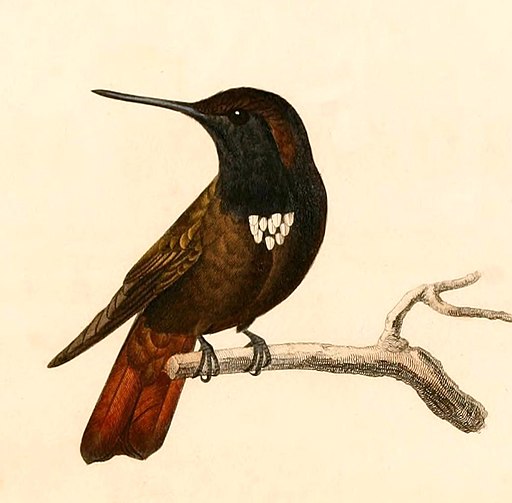Superregnum: Eukaryota
Cladus: Unikonta
Cladus: Opisthokonta
Cladus: Holozoa
Regnum: Animalia
Subregnum: Eumetazoa
Cladus: Bilateria
Cladus: Nephrozoa
Superphylum: Deuterostomia
Phylum: Chordata
Subphylum: Vertebrata
Infraphylum: Gnathostomata
Megaclassis: Osteichthyes
Cladus: Sarcopterygii
Cladus: Rhipidistia
Cladus: Tetrapodomorpha
Cladus: Eotetrapodiformes
Cladus: Elpistostegalia
Superclassis: Tetrapoda
Cladus: Reptiliomorpha
Cladus: Amniota
Classis: Reptilia
Cladus: Eureptilia
Cladus: Romeriida
Subclassis: Diapsida
Cladus: Sauria
Infraclassis: Archosauromorpha
Cladus: Crurotarsi
Divisio: Archosauria
Cladus: Avemetatarsalia
Cladus: Ornithodira
Subtaxon: Dinosauromorpha
Cladus: Dinosauriformes
Cladus: Dracohors
Cladus: Dinosauria
Ordo: Saurischia
Cladus: Eusaurischia
Subordo: Theropoda
Cladus: Neotheropoda
Cladus: Averostra
Cladus: Tetanurae
Cladus: Avetheropoda
Cladus: Coelurosauria
Cladus: Tyrannoraptora
Cladus: Maniraptoromorpha
Cladus: Maniraptoriformes
Cladus: Maniraptora
Cladus: Pennaraptora
Cladus: Paraves
Cladus: Eumaniraptora
Cladus: Avialae
Infraclassis: Aves
Cladus: Euavialae
Cladus: Avebrevicauda
Cladus: Pygostylia
Cladus: Ornithothoraces
Cladus: Ornithuromorpha
Cladus: Carinatae
Parvclassis: Neornithes
Cohors: Neognathae
Cladus: Neoaves
Superordo: Caprimulgimorphae
Ordo: Apodiformes
Familia: Trochilidae
Subfamilia: Trochilinae
Genus: Aglaeactis
Species: Aglaeactis pamela
Name
Aglaeactis pamela (d’Orbigny, 1838)
Original combination: Ornismya pamela
References
Magasin de Zoologie, Journal 8 cl.2 p.29 pl.77,78,79
Vernacular names
Deutsch: Schwarzbauch-Andenkolibri
English: Black-hooded Sunbeam
The black-hooded sunbeam (Aglaeactis pamela) is a species of hummingbird in the "brilliants", tribe Heliantheini in subfamily Lesbiinae. It is endemic to Bolivia.[3][4]
Taxonomy and systematics
The black-hooded sunbeam is monotypic.[3]
Description
The black-hooded sunbeam is about 12 cm (4.7 in) long including its 15 mm (0.59 in) straight black bill. Males weigh about 5.2 g (0.18 oz) and females 5.8 g (0.20 oz). The adult male is mostly purplish black, with glittering golden green to bluish green on the lower back and rump and a white tuft in the center of the breast. The tail is rufous with dusky tips to the feathers. Adult females are colored like the male but are duller overall and with less iridescent lower back and rump. Juveniles are somewhat browner than adults, with a reduced breast tuft and an olive cast to the tail.[5]
Distribution and habitat
The black-hooded sunbeam is found only in the Andes of northern Bolivia, mainly in the departments of La Paz and Cochabamba. In elevation it mostly ranges between 2,500 and 4,200 m (8,200 and 13,800 ft) but there are records as low as 1,800 m (5,900 ft). It inhabits cloud forest and humid to semihumid montane scrublands.[5]
Behavior
Movement
The black-hooded sunbeam is believed to be sedentary but might make seasonal elevational movements.[5]
Feeding
The black-hooded sunbeam feeds primarily on nectar; it forages at all levels and clings to flowers to feed rather than hovering. It also feeds on small arthropods.[5]
Breeding
The black-hooded sunbeam's breeding season is thought to span from September to March. Its breeding phenology, nest, and eggs have not been described.[5]
Dickcissel male perched on a metal pole singing, with neck stretched and beak open.
Songs and calls
Listen to black-hooded sunbeam on xeno-canto
Vocalization
Though the black-hooded sunbeam's vocalizations are not well known, it has been reported giving a "high pitched zeet-zeet-zeet", and other calls during antagonistic encounters.[5]
Status
The IUCN has assessed the black-hooded sunbeam as being of Least Concern. Though it has a small range and its population size is not known, the latter appears to be stable.[1] "At least in the short term, Black-hooded Sunbeam seems to be little affected by human activities".[5]
References
BirdLife International (2016). "Black-hooded Sunbeam Aglaeactis pamela". IUCN Red List of Threatened Species. 2016: e.T22687798A93169808. doi:10.2305/IUCN.UK.2016-3.RLTS.T22687798A93169808.en. Retrieved 26 April 2022.
"Appendices | CITES". cites.org. Retrieved 14 January 2022.
Gill, F.; Donsker, D.; Rasmussen, P. (July 2021). "IOC World Bird List (v 12.1)". doi:10.14344/IOC.ML.11.2. Retrieved 15 January 2022.
HBW and BirdLife International (2020) Handbook of the Birds of the World and BirdLife International digital checklist of the birds of the world Version 5. Available at: http://datazone.birdlife.org/userfiles/file/Species/Taxonomy/HBW-BirdLife_Checklist_v5_Dec20.zip [.xls zipped 1 MB] retrieved 27 May 2021
Schulenberg, T. S. and C. W. Sedgwick (2020). Black-hooded Sunbeam (Aglaeactis pamela), version 1.0. In Birds of the World (T. S. Schulenberg, Editor). Cornell Lab of Ornithology, Ithaca, NY, USA. https://doi.org/10.2173/bow.blhsun1.01 retrieved 26 April 2022
Retrieved from "http://en.wikipedia.org/"
All text is available under the terms of the GNU Free Documentation License


